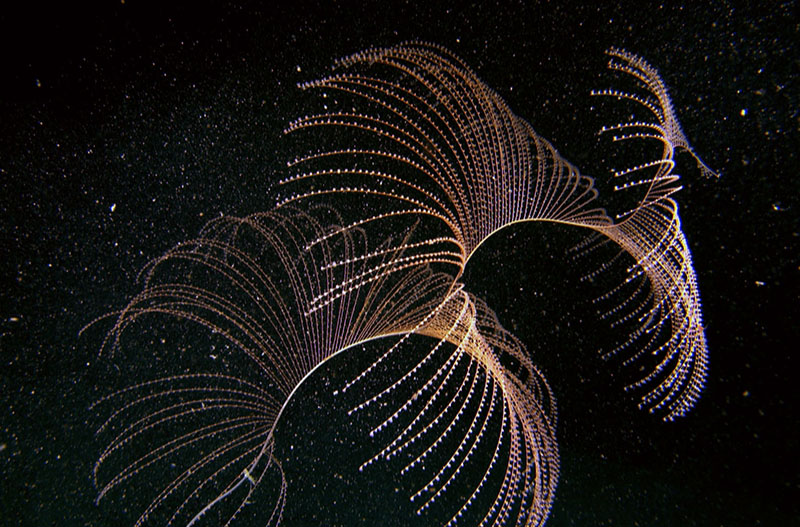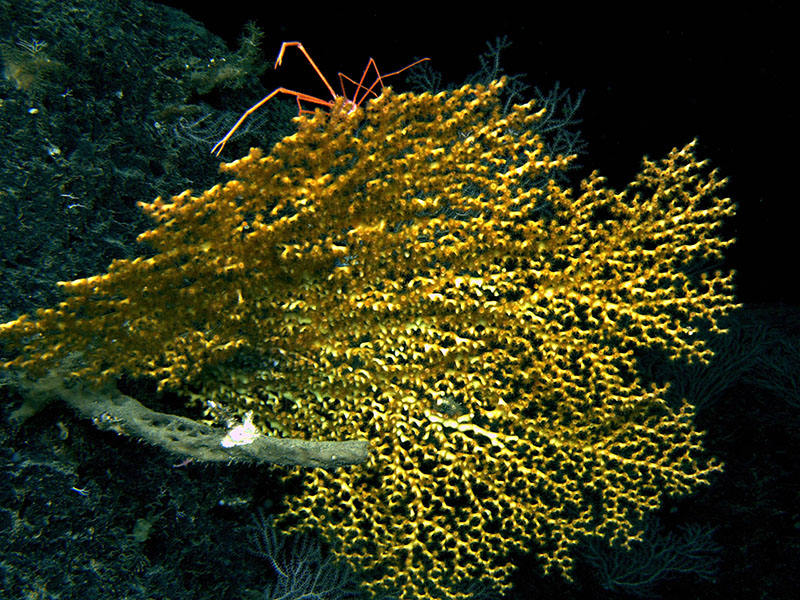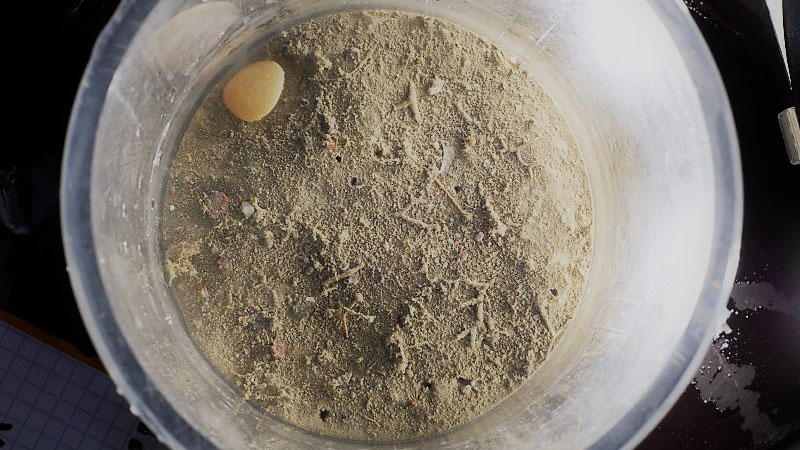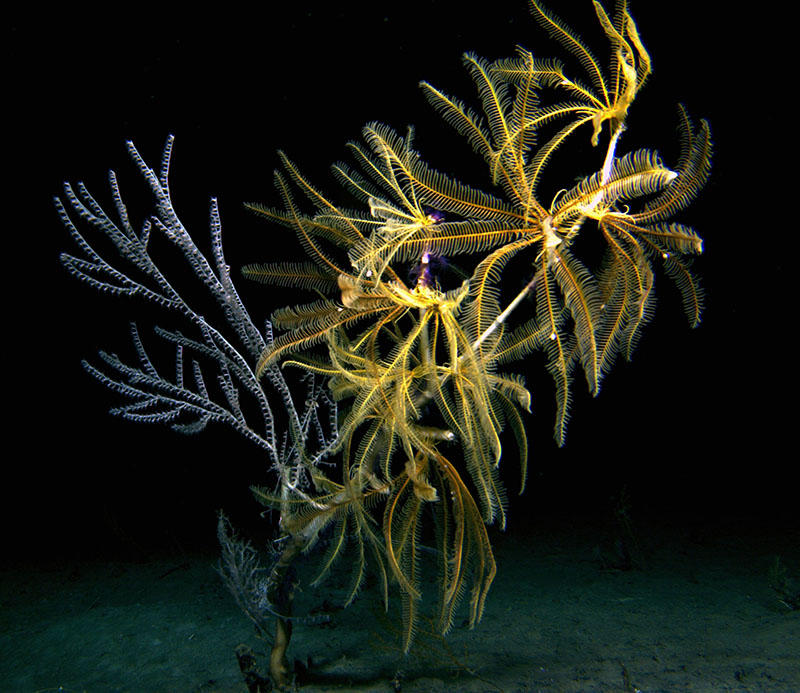Expedition Summary
From October 1 to 10, 2019, scientists from three institutions - Florida State University, Florida Agricultural and Mechanical University, and NOAA’s National Centers for Coastal Ocean Science - sailed on Research Vessel Point Sur in the eastern Gulf of Mexico.

The team used remotely operated vehicle (ROV) Global Explorer to study benthic (seafloor) communities off the West Florida Escarpment, focusing on deep-sea habitats at depths greater than 1,000 meters (3,280 feet), including coral and sponge communities as well as tiny animals living in the sediments called “meiofauna.” The team’s research objectives were to generate data on the distribution of coral species, assess whether meiofaunal communities can be used as indicators of ambient currents, and improve existing models that predict potential coral habitat.

The eastern Gulf of Mexico is characterized by a massive carbonate platform, sloping gently for over 200 kilometers (125 miles) offshore before dipping sharply to form the Florida Escarpment. This platform’s deep slope and escarpment are very steep and far away from the shore and are subject to high current conditions. Hence, it is one of the least accessible and least explored areas in the Gulf. In recent years, however, expeditions funded by NOAA have revealed extensive deep coral habitats on the slope as well as dense coral communities with different species assemblages on the escarpment.
The expedition team set off to generate critical information about the distribution of these deep-sea habitats in order to better understand and protect them. Based on existing multibeam bathymetry data, they identified the area as topographically complex with scarps, mounds, and ridges that are conducive to the development of deep-sea coral ecosystems. Instead of solely relying on data collected from known deep coral locations, the team incorporated coral-relevant variables such as current speed data gained from hydrodynamic models. With their refined habitat suitability model, the team guided explorations and targeted sites for discovery of new benthic communities. This was confirmed by their ROV surveys, during which the team discovered the presence of abundant and diverse deep coral communities, dominated by assemblages of octocorals and black corals not found on the shallower slopes.


The team also sampled meiofauna living in the sediment (called “infauna”) under different modeled current regimes during ROV dives. These infaunal communities were used to assess and validate the hydrodynamic model simulations of near-bottom currents. By seeing how meiofauna vary with current speed, this study lays the groundwork for future studies to determine the current speed in an area by simply taking sediment samples instead of relying on measuring water speed in an area over time. This novel approach provides another tool that can be used to define and predict habitats of interest to ocean exploration, research, and management.


The team also analyzed corals collected during ROV dives with genetic barcoding techniques to identify cryptic species and inform coral identification in ROV videos. Several of the species collected during the expedition are possibly new to science and were previously not known to the study area. A combination of morphological techniques and genetic metabarcoding was also used to identify meiofauna and enhance the assessment of their species diversity. Genetic barcoding was used to determine what kind of species live in the areas deemed suitable coral habitat by NOAA’s habitat suitability models. This coral and meiofaunal community information will be combined with existing data to improve the habitat suitability models.

The expedition resulted in the development of a predictive tool for science and management. The team is working with NOAA collaborators to combine the expedition data, including coral distribution, with the high-resolution oceanographic model to refine coral predictive habitat models for the deeper portions of the Gulf of Mexico. As part of their education and outreach efforts, an expedition website was established and the mission summary, background, explorer biographies, and daily logs authored by various scientific personnel at sea are available on the main page of Florida State University Coastal and Marine Lab.
Funding for this project was provided by NOAA Ocean Exploration via its Ocean Exploration Fiscal Year 2018 Funding Opportunity.
Contributed by Liang Wu, NOAA Ocean Exploration
Published May 9, 2022